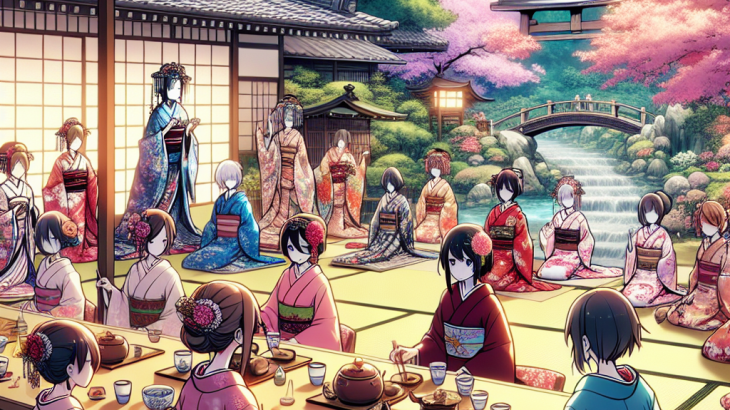Exploring the Influence of Japanese Culture in Anime
Anime, the internationally celebrated genre of animated media from Japan, is not merely a form of entertainment but a cultural phenomenon that carries rich traditions and values. For those eager to learn more about the symbiotic relationship between Japanese culture and anime, this exploration serves as a gateway. Let’s take a journey to understand how deep this influence runs.
The Roots of Storytelling in Japanese Anime
In Japan, storytelling traditions date back centuries, rooted in folklore, myths, and historical epics. These tales have for long served as moral compasses and a source of cultural identity. Anime often draws inspiration from these age-old narratives, adapting them into contemporary settings.
One of the most visible influences is the integration of Shinto and Buddhist elements. Characters frequently encounter kami (divine spirits) and embark on spiritual journeys reflecting these religions’ harmonious coexistence. A highly recommended example is “Spirited Away” by Studio Ghibli, where the protagonist’s journey is laden with mythical and spiritual encounters.
Traditional Arts and Aesthetics
Japanese art forms such as ukiyo-e (woodblock prints), calligraphy, and even kabuki theater have found their way into the aesthetic fabric of anime. These traditional forms are not just relegated to the visual elements but also resonate in thematic undertones. The minimalistic beauty found in these arts translates into anime’s visually striking and emotionally profound scenes.
For instance, series like “Mononoke” and “Mushishi” exhibit a style reminiscent of traditional Japanese art, featuring lush, painterly backgrounds and character designs that mirror historical aesthetics. The meticulous attention to detail creates an authentic atmosphere that captivates audiences globally.
The Concept of Community and Family
Anime often highlights the importance of community and familial bonds, principles deeply ingrained in Japanese society. These themes resonate through various anime genres, from slice-of-life to shonen (targeted towards young males) and shojo (targeted towards young females).
- Slice-of-Life: Shows like “Clannad” and “March Comes in Like a Lion” emphasize everyday experiences, relationships, and the support systems within communities.
- Shonen: Anime such as “Naruto” and “One Piece” underscore the value of nakama (comrades) and the lengths to which characters go to protect and support their friends and families.
- Shojo: Series like “Fruits Basket” and “Cardcaptor Sakura” explore friendships, romantic relationships, and family ties intricately.
Japanese Festivals and Seasonal Events
Japan is a land of festivals, each with distinct traditions, food, and activities. These festivals frequently appear in anime, offering international viewers a glimpse of Japanese cultural celebrations. Whether it’s the colorful Tanabata festival or the serene but lively cherry blossom viewing (hanami), these events enrich storylines and provide context.
In “My Neighbor Totoro,” the lush countryside setting and seasonal events transport viewers into rural Japan, creating an immersive cultural experience. The link between the environment and the narrative showcases the harmony that is characteristic of Japanese life.
Martial Arts and Samurai Code
The Bushido code, or the way of the warrior, is a historical code of conduct for samurai. Its principles of honor, courage, and discipline deeply influence anime. Numerous series pay homage to samurai culture and martial arts, either through historical settings or modern adaptations.
Series like “Rurouni Kenshin” and “Samurai Champloo” provide thrilling narratives interspersed with philosophical reflections on honor and combat. Even futuristic anime, such as “Ghost in the Shell,” often incorporate elements of martial discipline and ethical dilemmas, echoing the samurai spirit.
Conclusion
Japanese culture and anime are inseparably intertwined, each enriching the other and creating a vibrant tapestry that appeals to a global audience. By understanding this cultural backdrop, viewers can gain deeper appreciation and insight into their favorite anime series.
For those who wish to delve deeper into the fascinating world of anime and Japanese culture, consider watching detailed documentaries and discussions on this topic.
If you’re interested in exploring further, this [YouTube video](https://www.youtube.com/watch?v=XGmDm0rUzVw) provides an engaging overview of how traditional Japanese elements are integrated into anime.
So next time you watch an anime, remember, you’re not just consuming a story—you’re experiencing a rich cultural legacy that bridges the past and the present.
